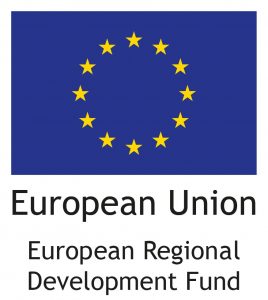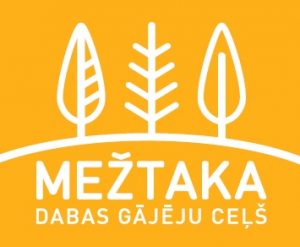Vangaži Church Bell-ringer Inga Freimane
We meet Inga Freimane at a place which once was an important traffic artery of the Russian Empire: the Riga-St. Petersburg highway. The Vangaži Lutheran Church was constructed here, at the junction, in the year of the French Revolution (1789). Inga is the chairperson of the congregation at this church. The church suffered greatly under World War I, but it was restored in 1935, thanks to determined people. The church is in the next to a forest, on a small mound, it is bright, warm and hospitable. According to written sources, the church was constructed at the site of Tenis Abrams chapel with a cemetery next to it. Nearby, there is the Kalnaabranti Werewolf Pine with a sort of “budding” trunk that, if you can believe in stories, has once played a ritual role.
In response to the question of how Inga had found herself in Inčukalns, she replied that her parents had moved to Inčukalns in 1957 and started working at the local hospital in the former Inčukalns Hunting Palace. Later, a year after Inga was born in 1961, they built a family house at Rožu Street in Inčukalns. The greatest advantage of living in Inčukalns is knowing everybody very closely because the community is small, like a family. The place itself is rich in historical and nature sites and, of course, there is the most beautiful river Gauja. One of Inga’s childhood dreams had been to become a teacher of math. During her school years, she managed to explore all possible areas of extracurricular activities: she graduated from the Sigulda School of Music, participated in eloquence contests, there were basketball, athletics, skiing and cycling trainings and competitions, even a year at the Murjāņi School of Sports.
Inga also liked Juris Podnieks’ films, so it seemed right to be a documentary director at one point. She saw it as a way to highlight and talk about problems. Later she joined the training courses of acting at the National Theatre, but soon realised that professional acting was not for her, so she finally found herself in the National Conservatoire of Latvia, where she studied to become a cultural worker. Inga recalls one of her greatest professional duties of the study period – organising the stage entrance of the male voice groups at the Grand Song Festival of 1980 in Mežaparks. Later on, she worked as a cultural inspector in the Riga Proletarians’ district (today renamed into Vidzeme suburb), until, as a coincidence, in 1983 she was invited to manage the newly constructed Gauja Culture Centre.
In 1983, the rich fur holding “Gauja” unveiled an untypically large and technologically advanced cultural centre in the village of Gauja, where there was no cultural life at all. The total capacity (1050 seats) of the centre exceeded the population of the village. At the time, high-quality cultural events took place at the centre, there were professional theatrical performances, the concerts from the Philharmonic were crowded, and even congresses of the Riga District Communist party had taken place there. Inga, 23-year old and having two small children at the time, led a team of 32 people which was not easy, because among them, as Inga points out, there were also people who, for various reasons, were no longer fit for work in the Soviet fur farming enterprise. After the collapse of the Soviet Union, the Culture Centre was initially turned into a mall, and then it was abandoned. It is now run by the committed Rīti brothers, who are determined to set up a youth technology centre and exhibit vehicles of the Soviet period there.
Inga has vivid memories of Christmas 1985, when she for the first time had come to the Vangaži Church in a horse-drawn sledge. Like other churches, there was a warehouse here, where they stored slot machines, glass containers, and other weird items from a casino in Mežaparks. Much later, when her brother had a daughter and she had been chosen as her godmother, Inga’s mother recommended the church for christening. In 1999, they christened little Katrīna Ieva there and Inga stayed with the church. Four years later, Inga became the chairperson of the parish and began working at Inčukalns Community Centre.
The church is located at a remote place that makes it harder to reach it, but at the same time its landscape and rural peace create unique experiences. Inga not only leads the parishioners, but also organizes pilgrimages and has even had to climb the spire of the more than two-hundred years old church to ring the bell.


